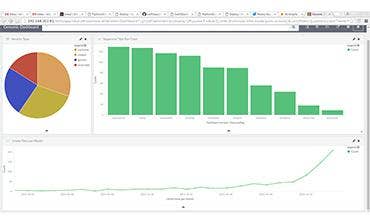SwiftStack 4.0 Gives OpenStack Object Storage External Metadata Search, Integrated Load Balancing

SwiftStack, developer of a commercial version of the open-source Swift object storage technology, on Tuesday introduced SwiftStack 4.0, the latest iteration of its platform featuring integrated load balancing and improved metadata searches.
SwiftStack 4.0, which was introduced at the OpenStack Summit this week in Austin, Texas, is aimed at server-focused channel partners who can use the software to build object storage solutions with the benefits of an OpenStack cloud, said Mario Blandini, vice president of marketing for the San Francisco-based company.
"It's like doing storage on Amazon or Google or Microsoft Azure, but in your data center behind your own firewall," Blandini told CRN.
[Related: Dell Partners With Scality On High-Density Object Storage]
New with SwiftStack 4.0 is integrated load balancing, which Blandini said is aimed at overcoming the bottlenecks that happen when users access storage across a network.
"With integrated load balancing, there's no need for equipment from [Seattle-based] F5 Networks or [San Jose, Calif.-based] A10 Networks," he said. "There's no more need to ask the network guy for permission or help to get data moving faster."
SwiftStack 4.0 also now includes the ability to export the metadata generated by object storage for use in searches with third-party indexing and search services, Blandini said.
"Classic file systems have limits to what information users can access," he said. "Object storage lets users use as much of the metadata as they need. Users can use that metadata for external searches. The power of object storage is in the metadata. But most object storage solutions don't have the ability to export metadata."
Also new is a series of data migration tools channel partners can use to help customers with capacity planning or for moving data to the SwiftStack platform while the applications continue to run uninterrupted, Blandini said.
"Customers sometimes may be running their own internal object storage and realize that to compete with Google or Amazon, they need to migrate to SwiftStack," he said. "Or they may be in another public cloud environment but need to get off, such as after incubating in the cloud."
SwiftStack 4.0 also has an optional desktop client for Windows or Mac environments called SwiftStack Drive that gives users the ability to pull data from storage to their laptops for sync and share without the need for third-party applications, Blandini said.
Blandini said SwiftStack will introduce two major upgrades to its object storage platform in the second half of the year.
The first is Cloud Sync that can be used to synchronize containerized object storage in private clouds with Amazon Web Services buckets.
The second is a transparent way to access storage in SwiftStack environments as if they were stored in a file format, Blandini said.
"We are working with the open source community to add file access to our object data," he said. "This means there's no longer any need for external gateways. Today, you have to access data as a file or an object. By year-end, we will offer single, transparent access to either. This is especially important for older applications that will never get modern storage interfaces, including applications written by enterprises."
SwiftStack's ability to integrate file and object storage was a primary reason for working with the vendor, said John White, director of product strategy at Expedient, a Pittsburgh-based provider of managed, cloud and data center services.
White told CRN that his company, which primarily works with VMware for its cloud infrastructure, is seeing a lot of customers looking at rolling data from large file systems to object storage platforms.
"SwiftStack 4.0 has the tools to migrate the data while providing Dropbox-like tools," he said. "All these drive more data to our cloud. If a customer is using Dropbox or Google Drive, they can migrate to SwiftStack."
Such customers may be apprehensive about using Dropbox or Google Drive because the data rests outside their own four walls, White said. "If they can move that data to our data centers, they are less concerned about the security of the data," he said. "Data governance is usually one of the top reasons they come to us."